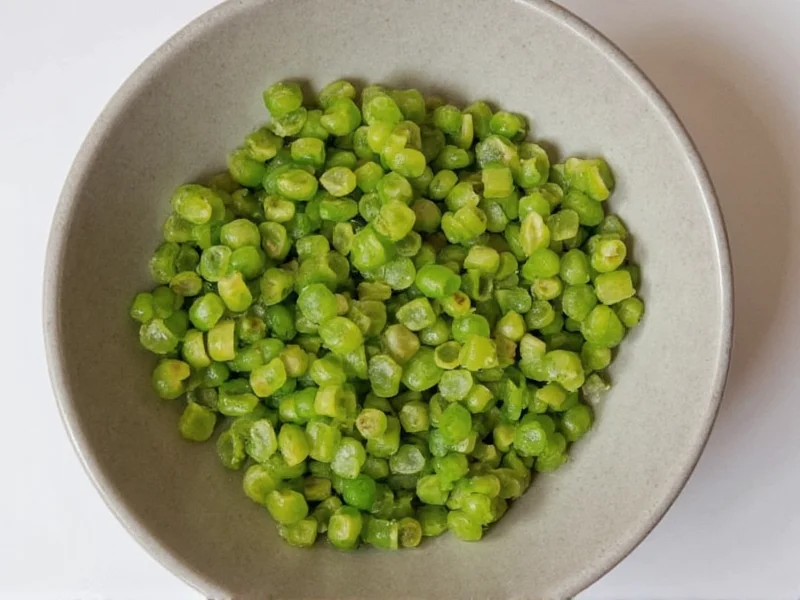Chervil, often called "gourmet's parsley," is a delicate herb with subtle anise and parsley notes that's essential in French fines herbes blends. Unfortunately, its short growing season and limited availability make finding fresh chervil difficult for many home cooks. Understanding proper chervil replacement options ensures your dishes maintain authentic flavor profiles even when this specialty herb isn't accessible.
Why Chervil Substitutions Are Necessary
Chervil's growing season is brief (spring to early summer), and it wilts quickly after harvest. Many grocery stores don't stock it regularly, making substitution knowledge essential for preparing classic French dishes like béarnaise sauce, salade verte, or oeufs à la neige. Unlike hardier herbs, chervil loses its distinctive flavor when dried, so fresh alternatives become necessary for authentic results.
Top Chervil Substitutes Compared
| Substitute | Flavor Profile | Best For | Substitution Ratio |
|---|---|---|---|
| Parsley (flat-leaf) | Grassy, mild bitterness | General cooking, soups, stews | 1:1 |
| Tarragon (French) | Strong anise/licorice notes | Béarnaise sauce, chicken dishes | 1:2 (use half amount) |
| Chives | Mild onion flavor | Egg dishes, potato salads, garnishes | 1:1 |
| Dill | Grassy with citrus notes | Fish dishes, cucumber salads | 1:1.5 (use slightly more) |
| Cilantro | Bright, citrusy | Asian-inspired dishes, salsas | 1:1 (not for French cuisine) |
Detailed Substitution Guide
Parsley: The Most Accessible Alternative
Flat-leaf parsley serves as the most widely available chervil substitute with similar visual appeal and mild flavor. While lacking chervil's anise notes, it provides the same fresh green finish to dishes. This chervil replacement for salad applications works particularly well in green salads where visual presentation matters. For french cuisine chervil substitute needs, combine parsley with a pinch of fennel fronds to approximate chervil's distinctive flavor.
Tarragon: Closest Flavor Match
French tarragon offers the most similar anise-like flavor profile to chervil, making it ideal for chervil substitute for béarnaise sauce requirements. Use half the amount of tarragon compared to chervil since its flavor is more pronounced. When preparing classic French sauces, this substitution maintains authenticity better than other options. For chervil replacement in french cuisine, tarragon works best in egg dishes, chicken preparations, and creamy sauces.
Chives: For Delicate Onion Notes
Chives provide a mild onion flavor that complements chervil's delicate nature without overwhelming dishes. This fresh chervil alternative works particularly well in egg dishes, potato salads, and as a garnish where chervil would typically be used raw. Unlike chervil, chives maintain their flavor when cooked briefly, making them versatile for both raw and cooked applications.
Recipe-Specific Substitution Recommendations
Understanding which substitute works best for specific dishes ensures optimal results:
- For béarnaise sauce: Use 1 part tarragon + 1 part chives (¼ cup total per recipe) as your chervil substitute measurements
- For fines herbes blend: Combine equal parts parsley, chives, and tarragon (reducing tarragon by half if sensitive to anise)
- For green salads: Use flat-leaf parsley with a few fennel fronds for the closest chervil substitute for salad experience
- For fish dishes: Dill makes an excellent chervil alternative for cooking with seafood, particularly when chervil's anise notes would complement the dish
Avoiding Common Substitution Mistakes
Many home cooks make these errors when seeking a what herb can I use instead of chervil solution:
- Using dried chervil: Drying destroys chervil's delicate flavor compounds—always seek fresh substitutes
- Overusing tarragon: Its stronger flavor can dominate dishes if used in equal amounts to chervil
- Substituting basil: While sometimes suggested, basil's sweet profile doesn't match chervil's subtle anise notes
- Ignoring dish context: The best chervil replacement for french cuisine differs from substitutions for Asian or Mediterranean dishes
Creating Your Own Custom Blend
For the most authentic results, create a custom blend based on your specific recipe needs. For most French applications, combine:
- 2 parts flat-leaf parsley
- 1 part chives
- ½ part tarragon
- Optional: Tiny pinch of fennel pollen for enhanced anise notes
This blend serves as an excellent herb similar to chervil solution that works across multiple applications. Store unused portions in a damp paper towel in an airtight container for up to three days.
When Substitutions Won't Work
Some traditional French preparations like herbes à la grecque or specific fines herbes applications require chervil's unique flavor profile. In these cases, consider:
- Growing your own chervil (it's easy to cultivate in partial shade)
- Checking specialty farmers' markets during spring
- Ordering fresh chervil from online gourmet suppliers











 浙公网安备
33010002000092号
浙公网安备
33010002000092号 浙B2-20120091-4
浙B2-20120091-4